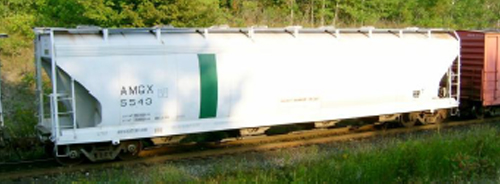UMLER
Another piece to the equipment identifying process is UMLER, which stands for Universal Machine Language Equipment Register. UMLER is a database that contains the Railway Equipment Register car information and is used by all railroads to verify that cars being billed exist. A car that does not show in the UMLER file will be rejected by the railroad until the car number has been corrected.
Railinc maintains the UMLER file for all railroads.
You can find most of what you need to know about any railcar by reading its markings. Stenciled on the sides of every railroad freight car, you will usually find:
For the car initial and number, you can see both carrier-owned car numbers as well as customer-owned or leased car numbers. All private cars (customer-owned or leased) will have the car initial ending in the letter X. This limits what the railroads can do with this type of car, they cannot reload the car for any other customer, and they cannot charge demurrage for the car when on a customer’s facility. An example of both types of car initials is as follows:
Private cars will have one that is owned by the shipper or from one of the leasing companies:

A car owned by a railroad would be like the following:

Railroads can have many different car initials that they own and use. Over the years as the railroads have merged the railcars have continued to show the old railroad name and not the new railroad name. For example, CSXT has marks of CO, BO, SCL, ACL to name a few.
In addition to the car initial and number stenciled on the car is the weight information that the car can be loaded to. This gives both the shipper and carrier the information needed to determine if a car has been overloaded and could be problem as the car is moved to destination. What this tells is the maximum load limit the car may be loaded to, the tare weight of the empty car, and in some instances the net weight that can be loaded. The following is a good explanation of these terms:




